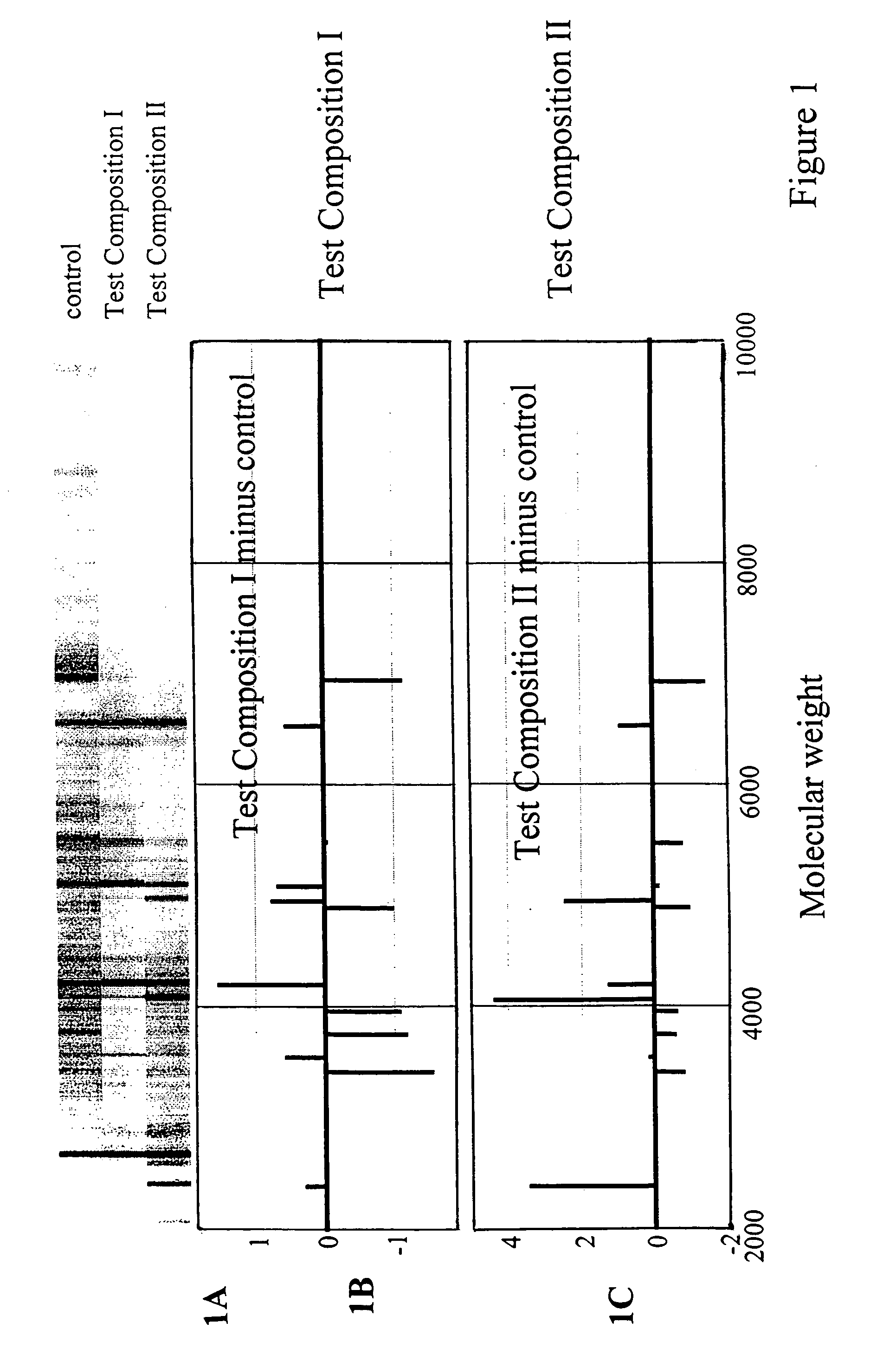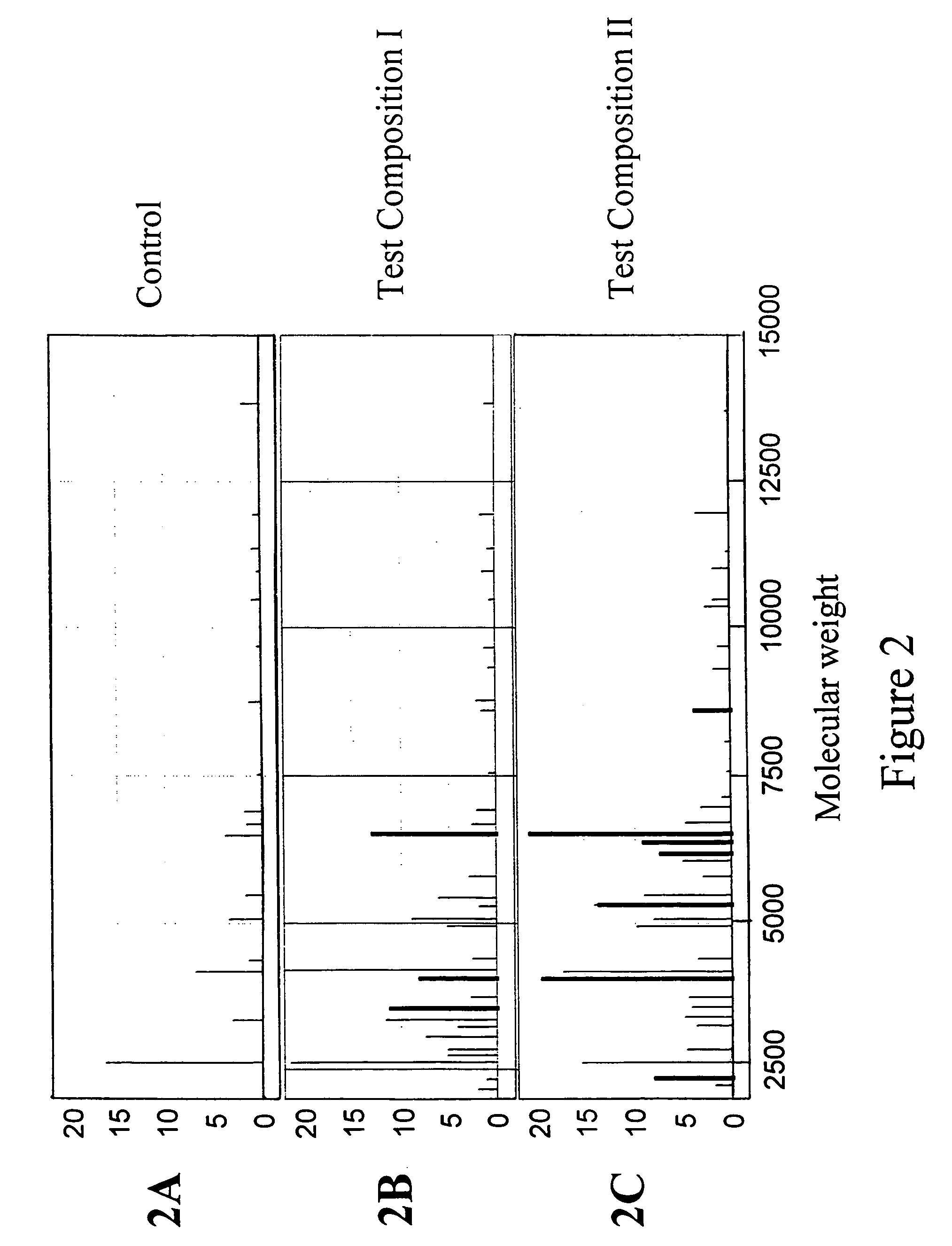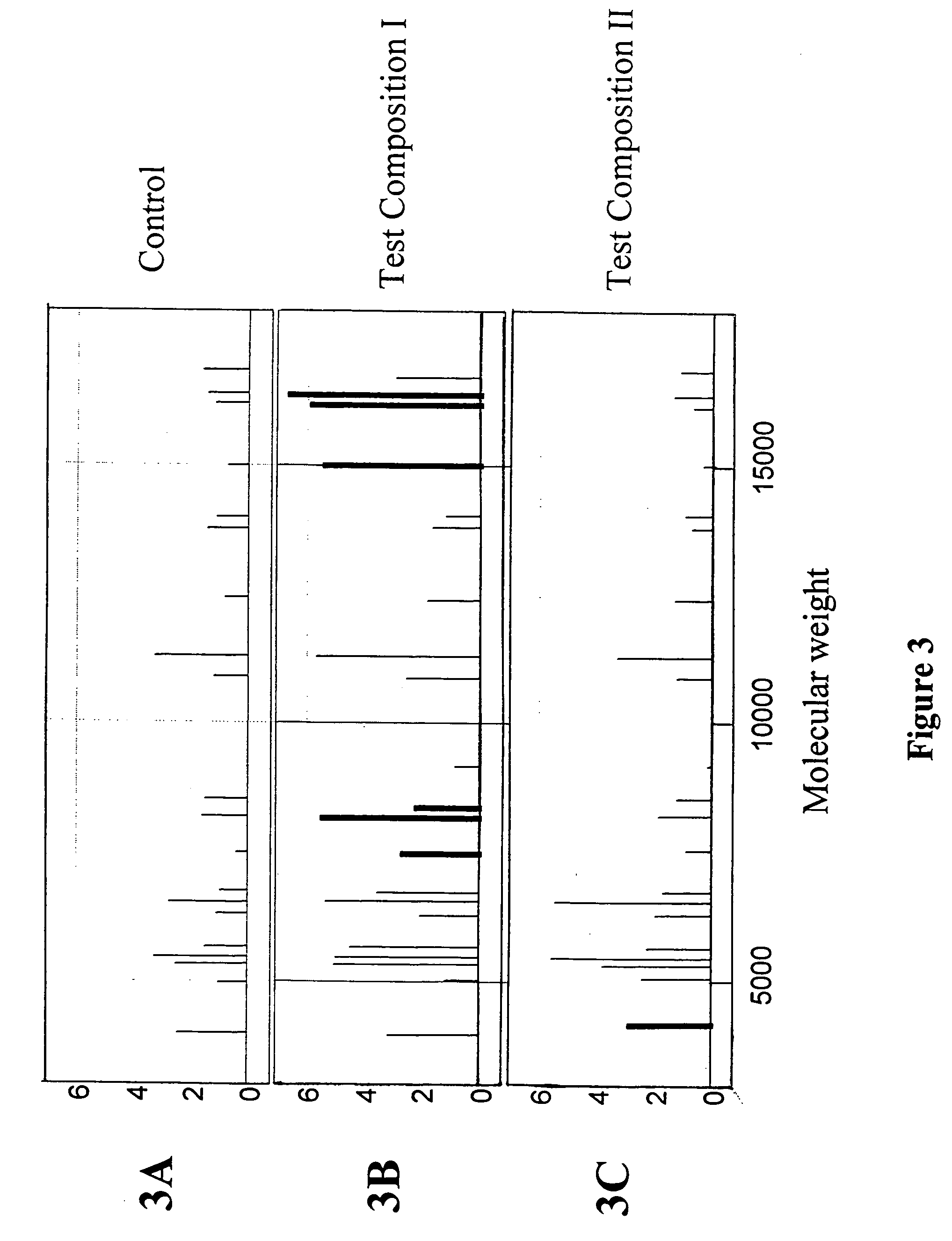Toxicity typing using liver stem cells
a stem cell and liver technology, applied in the field of toxic compound identification and characterization, can solve the problems of affecting the development of industrial and household chemicals, and limiting the rate of drug toxicity to the host system, and achieve the effect of convenient us
- Summary
- Abstract
- Description
- Claims
- Application Information
AI Technical Summary
Benefits of technology
Problems solved by technology
Method used
Image
Examples
example 1
Selecting Chemical Compounds For Toxicity Screening
[0121]Compositions that fall into particular categories of toxicity are used to establish molecular profiles and compile libraries for particular toxicities. Table 1 lists a number of compositions that are known to be toxic to certain tissues or organs or during developmental stages. In particular, those compositions that cause liver toxicities are assessed for their molecular profiles by determining alterations of gene or protein expression patterns in LSCs contacted by each composition. A library comprising molecular profiles of compositions having liver toxicities is therefore compiled. Those compositions causing cardiovascular toxicities are similarly assessed for their molecular profiles and a library compiled. In addition, molecular profiles and library thereof for compositions having toxicities on the central nervous system and for compositions having developmental toxicities are similarly established using the LSC system. Th...
example 2
Establishing Protein Profiles For Chemical Agents Relating to Tissue / Organ Toxicities
[0123]This Example demonstrates the culturing of liver stem cells, the exposure of the liver stem cells to different chemical agents having pre-determined tissue or organ toxicities, and the determination of changes in protein expression in the liver stem cells.
Isolation of Cells
[0124]Human liver progenitor cells are isolated, purified and culture-expanded according to methods described below:
Method 1:
[0125]Liver precursor cells are isolated according to Reid et al., U.S. Pat. Nos. 5,576,207 and 5,789,246. Briefly, a liver section is placed in an ice-cold PBS solution that contain 500-5000 mg / L glucose, and 2-10% antibiotics (e.g., penicillin and streptomycin). The liver section is minced and sequentially digested with a solution containing collagenase, pronase and deoxyribonuclease, prepared in a saline solution containing 1 mM CaCl2. Digestion is done at 37° C. in a shaking water bath for about 20...
example 3
Screening Of Anti-cancer Drugs for Tissue and Organ Toxicities
[0154]This example illustrates using the LSC system for screening anti-cancer agents for their tissue or organ toxicities.
[0155]Compounds and drugs (both anti-cancer and therapeutic) that have known toxicities and biology endpoints in humans and / or animals are selected for compiling their gene or protein expression profiles in LSCs. In addition, compounds are selected with related known mechanisms of activities and with regard to compounds that have been used in previous studies to correlate clinical outcomes with human in vitro cell culture effects. Table 3.
[0156]
TABLE 3TOXICITIESEVIVERVINSENALLOODMECHANISMDRUGSchloroquinoxaline sulfonamide?didemnin B?cyclosophosphamidealkylatorbizelesinalkylatorcarboplatinalkylatorcisplatinalkylatoroxaliplatinalkylatorecteinascidin 743alkylatorpenclomedinealkylatormethotrexateanti-metabolitefuzarabineanti-metabolitefludarabineanti-metaboliteflavopiridolCdK inhibitordoxorubicinDNA interc...
PUM
| Property | Measurement | Unit |
|---|---|---|
| molecular weight | aaaaa | aaaaa |
| pH | aaaaa | aaaaa |
| power | aaaaa | aaaaa |
Abstract
Description
Claims
Application Information
 Login to View More
Login to View More - R&D
- Intellectual Property
- Life Sciences
- Materials
- Tech Scout
- Unparalleled Data Quality
- Higher Quality Content
- 60% Fewer Hallucinations
Browse by: Latest US Patents, China's latest patents, Technical Efficacy Thesaurus, Application Domain, Technology Topic, Popular Technical Reports.
© 2025 PatSnap. All rights reserved.Legal|Privacy policy|Modern Slavery Act Transparency Statement|Sitemap|About US| Contact US: help@patsnap.com



